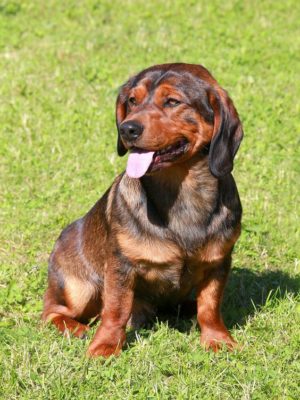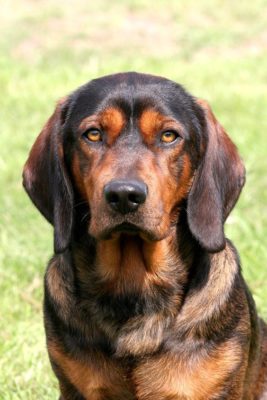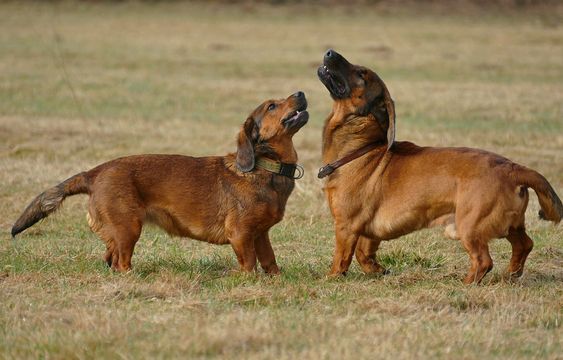Alpine Dachsbracke
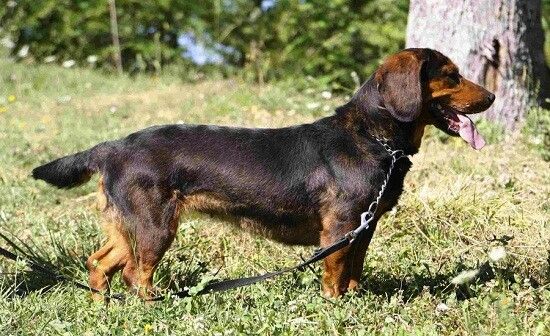
The Alpine Dachsbracke has a balanced character, as do most hounds. It is a faithful helper and companion for its master in hunting; it is not in a hurry to follow the trail without being nervous, calmly giving its voice at the right time. Vigilant and obedient, aggression is not peculiar to the Alpine Dachsbracke. Strangers perceive calmly, children will not offend, but we didn’t hire this dog as a babysitter.
Table of Contents
Breed Information
| Another Name | Alpenländische Dachsbracke |
| Origin | Austria |
| Height | Males 37-38 cm Females 36-37 cm |
| Weight | 15-18 kg |
| Fur | Short |
| Color | Black and papal, brown and papal, red of different shades, spotted |
| Lifespan | 10-12 years |
| FCI Classification | Scent hounds and related breeds |
| Group | Hunting dogs |
| Price | From $2000 |
Breed Photos
Origin History
The Alpine Dachsbracke has quite a long history, even though it was officially recognized only in 1975. The ancestors of these low-sized hunting dogs are considered the dachshund hounds, the Segurian Bracke, and, surprisingly, the long-legged brackes. In the 19th century, the Austrian crown prince was a fan of this breed and tried his best to spread them worldwide and make them popular. Unfortunately, today, Alpine Dachsbracke is a scarce breed and is almost never found outside its historic homeland.
Appearance
The short-necked Alpine Dachsbracke is designed for hunting and has an elongated body and broad floppy ears, which are the dachshund breeds’ trademark. The long head, medium-sized eyes, long body with a muscular neck and taut belly give off a confident bloodhound.
The tail is of medium length, thick at the base, depending on the mood, now down, now up, saber-shaped, with a slight suspension. The coat is short, very thick, coarse, tightly fitting to the body. It is long and stiff on the back, belly, and back of the thighs. Color can be red in different shades of black and putty, brown and putty, white with different shades.
Character
The Alpine Dachsbracke has a balanced character, as do most hounds. It is a faithful helper and companion for its master in hunting; it is not in a hurry to follow the trail without being nervous, calmly giving its voice at the right time. Vigilant and obedient, aggression is not peculiar to the Alpine Dachsbracke. Strangers perceive calmly, children will not offend, but we didn’t hire this dog as a babysitter. The dog is intelligent; he wants to see his master as a leader, a solid person you can obey without question. Alpine Dachsbracke is independent, does not require round-the-clock care, is not very fond of company, does not need affection, prefers to be alone with nature and itself.
Care
Those wishing to purchase the Alpine Dachsbracke as an apartment dog, buying into its small size and benevolent disposition, may seriously get into trouble. This dog is designed more for avid hunters and gamekeepers who will provide the pet with constant exposure to the outdoors and freedom. Without frequent and long walks, you can’t do without it.
In general, the care of the Alpine Dachsbracke is standard. Particular attention should be paid to their large hanging ears. Timely cleaning will keep you from unnecessary inflammations and infections. Give a little attention to the short hair every day, combing, rubbing, and bathing as needed.
Training
Building a trusting and respectful relationship between the owner and the Alpine Dachsbracke has a huge impact on successful training. Only persistence and firmness will help to cope with the stubborn and independent character of the hound. Most of all, they do not tolerate injustice and criticism to their address. It is better to encourage tasty treats and praise for success in training. Jogging and canine sports are ideal for calming excessive energy.
Common Diseases
Alpine Dachsbrackes are owners of a strong skeleton and sturdy body. But there are weaknesses, especially in the musculoskeletal system. Alpine Dachsbrackes often have patella dislocations and spinal disorders, particularly degenerative changes in the intervertebral disc. The dog’s teeth, which are prone to various dental diseases, are at risk. Hanging ears cause the appearance and complicate the course of inflammatory processes. In treating the Alpine Dachsbracke dog, you should keep in mind the possible sensitivity to anesthesia.
Nutrition
The standard daily norm of meat products for Alpine Hounds weighing up to 20 kg is 200-300 g. In addition to lean meat, it is advisable to offer your hound by-products, particularly rich in nutrients rubs. About 200 g of vegetables will provide it with fiber and vitamins, 50-70 g of cereals, and 60-80 g of bread will give it energy. The diet’s vitamin and mineral composition are enriched by using bone meal, young greens, and special additives. Some experts also recommend seasoning meals with regular salt.
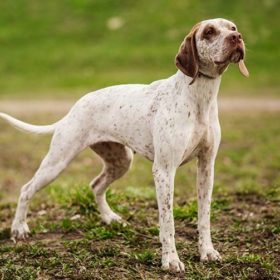 Braque du Bourbonnais
Braque du Bourbonnais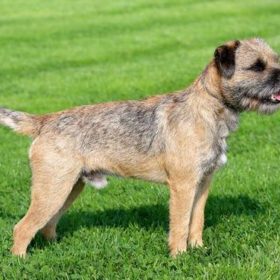 Border Terrier
Border Terrier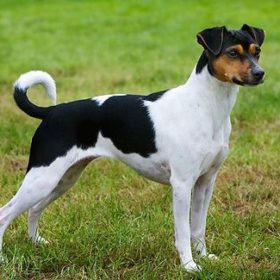 Brazilian Terrier
Brazilian Terrier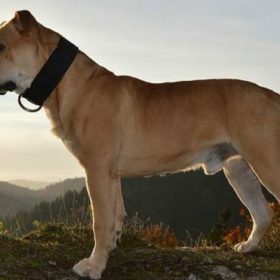 Ca de Bou
Ca de Bou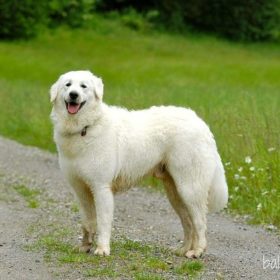 Kuvasz
Kuvasz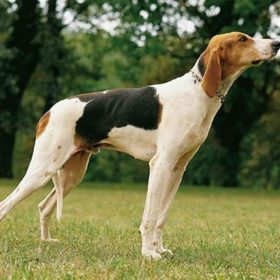 Chien Français Tricolore
Chien Français Tricolore